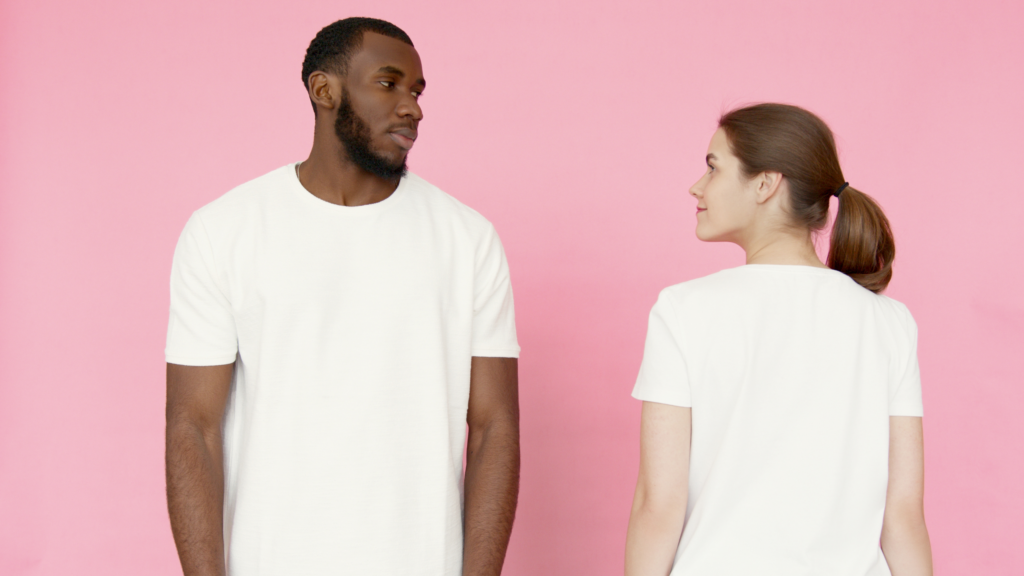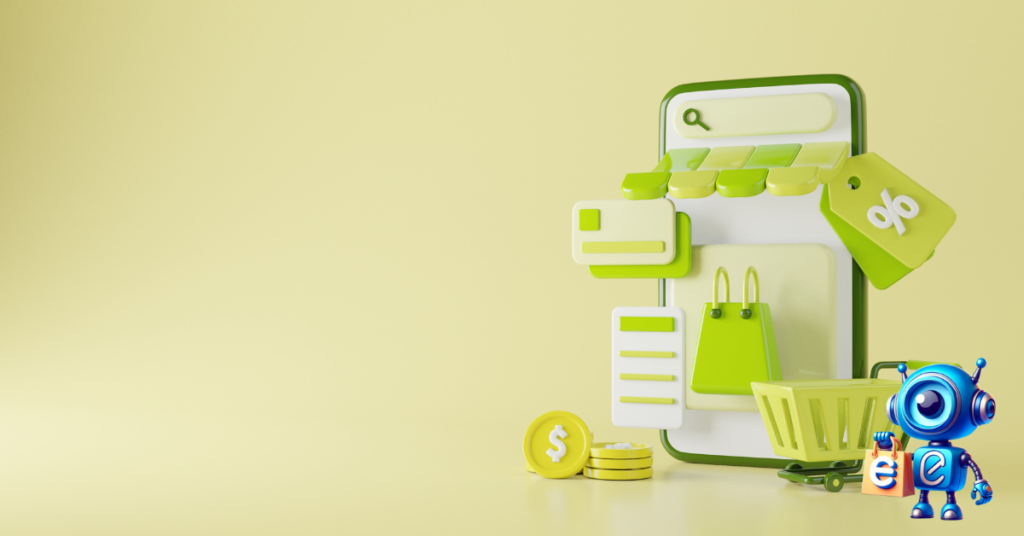A report by Grand View Research shows very promising statistics about the global t-shirt printing industry. As per the 2022 report, the global market size for custom t-shirt printing was $4,300 million.
On the other hand, the projected CAGR (compound annual growth rate) was 11% from 2023 to 2030. These figures show that this market can be lucrative for anyone wanting to enter it.
So, is this your dream or a side hustle you’ve thought about?
While starting a business always has challenges, here is a guide on how to start your t-shirt business and succeed.
Remember, starting is not enough; you need it to be profitable.
Table of Contents
How to Start Your T-Shirt Business: Best Tips
The following steps will help you start a business selling your designs on T-shirts.
Choosing a Niche
The t-shirt print-and-sell market can be broad. As a new business, there will be better options than catering to a broad market.
Therefore, choosing a niche to serve becomes the first and most crucial step when starting a t-shirt business.
It helps your business stand out among the market’s myriad competitors and enables you to identify the specific audience you want to serve.

But how do you choose a niche?
Where do you even start?
Well, start your research on your social media platforms. Nowadays, they’re the hub for everything, from business to social and political issues.
You can also use keyword research tools to uncover what your target customers are searching for. This will give you an idea of the route for your t-shirt business.
You can also discover what designs are doing well on various e-commerce sites.
And lastly, remember to follow your passion and creativity. That will indeed differentiate your brand.
Come Up with a Business Plan
It doesn’t have to be complicated. I know most people dread creating a business plan. However, if you don’t have a plan, you certainly are planning to fail.
Therefore, come up with a simple plan for your business. It will guide your path to success.
Your business plan should help you answer some of these questions:
- What are your goals?
- Who are your customers?
- What do you intend to achieve, and how will you achieve it?
- Where do you want the business to be in one, two, or three years?
- What’s your marketing strategy
- How are you funding the business?
- Do you need a team?
The answers to these questions help you curve a clear path for your business.
Choose a Business Name
It would help if you had a name to help your customers identify your shop. So, before making your t-shirts, come up with a name. It could be your name, the initials of your name, or something related to the business.
However, always ensure that the name is easy to remember. Make the work easier for your audience.
Also, register the name to bar other people or businesses from using it. During the name registration, you will also know whether your name of choice has been used elsewhere. If it has, look for another one to avoid trademark issues.
There are usually four options when registering your business name, each with its purpose. These options include:
- Entity Name: It protects your business name at the state level
- Trademark: It offers protection at the federal level
- Domain Name: It protects your business on the Internet
- DBA (Doing business as): It might be a legal requirement in some states, but it doesn’t offer legal protection.
A business name is crucial to help customers find your business.
Read Also:
- Zendesk Alternative: Why Choose Ecommercebot
- Engati Alternative: Why Ecommercebot Tops The List
- How Do I Find A Supplier For My Dropshipping?
- 10 Best WordPress Chatbot Plugins For Your Website
- How To Create Instagram Posts With AI
Choose a Business Structure
While many small businesses choose sole proprietorships, you can select other business structures. You could opt for a partnership, an LLC, or a corporation.
Each of these structures has its benefits and also comes with certain obligations.
For example, you are one with your t-shirt business as a sole proprietor. Your business issues are yours; if the company suffers, you also do.

Personal property or assets are not protected if the business experiences a financial crisis. However, they can be used to settle debts or liabilities.
On the other hand, an LLC, a Corporation, or a Limited Liability Partnership offers protection for your assets. They are distinct from the business unless a judge rules otherwise.
Also, tax obligations for these business structures are different. The US Small Business Administration has all these details.
Register your T-Shirt Business
Once you have your desired business name and decide on the business structure, you can register your business. Registering your t-shirt business as an LLC offers more benefits than a sole proprietorship.
First, an LLC offers more tax benefits. Also, when registering an LLC, you must apply for EIN (Employer Identification Number).
With your EIN, your business can acquire blank T-shirts at cost. Using your SSN (Social Security Number) will be difficult.

Various states have different registration requirements for small businesses. Therefore, ensure that you familiarize yourself with the legal requirements in your state.
Registering a business in the UK is easier, tax-friendly, and more convenient than having a US LLC, which has many obstacles and regulations.
Registering your T-shirt business can cost you between $50 and $100, depending on the state.
Identify Ideal Suppliers
Identifying a supplier is another crucial step. Your chosen supplier can help build or ruin your business before it starts.
A supplier can be a wholesaler of blank t-shirts or a custom t-shirt manufacturer. Choose a supplier who guarantees top-quality products. This ensures that your customers never have to complain about quality issues.
Many small business owners choose cheap options, which is usually a bad idea.
Low prices should encourage you to maintain the quality of your offering. If a customer is not satisfied with the quality of your t-shirts, they will not buy from your shop again.
Also, they can only refer you to your store. The opposite is also true. Quality t-shirts mean satisfied customers, which leads to more sales from repeat and referral customers.
You can choose a quality t-shirt based on size, weight, material, and softness. And before making that bulk purchase, ensure you place a sample order. This should show you the kind of quality your customers expect.
Identify the Ideal T-shirt Printing Options
Before coming up with your t-shirt designs, you need to know how you’ll print them on your t-shirts. There are several options to go about this to ensure good quality products.
First, you could buy the screen printing machines and print the t-shirts yourself. This is ideal, especially if you want a work-from-home job option. It also offers an excellent opportunity to control the quality of the end products.
To venture into online videos, you can record your t-shirt production processes and post them on TikTok, Instagram, Facebook, or YouTube. The only drawback is that buying the screen printing equipment can be costly.
Another printing option is contracting a local printing company. This should relieve you of the burden of printing the t-shirts yourself. You also won’t have to worry about the initial capital needed to buy the equipment or set up a working space.
However, this option also has some drawbacks. For example, you have little control over the printing quality. This could affect your brand’s image. Therefore, choose a printing company wisely by first reviewing their work.
Print-on-demand is an excellent option to avoid the hassle of t-shirt printing or sourcing raw materials.
With a print-on-demand service, you only have to create and market the designs in your online store. The company does the rest, including sourcing t-shirts, printing them, and shipping them to customers once orders are made.
Some great examples of print-on-demand options include Printify, Printful, and Mech by Amazon.
They can help you start your t-shirt business first and with minimal upfront capital.
Create your T-Shirt Designs
You can start creating those unique designs now that everything is set up. The designs should be influenced by the target audience’s preferences and interests, which you identified during your market research stage. Your creativity and passion also play a significant role here.
But it would help if you did more to keep the designs fresh and unique every time. For instance, learning is a never-ending process.
So, keep learning.
Studying the market trends is one way to do this.
Understand which graphic designs are doing well through marketplaces like Redbubble or Zazzle. You can also Google search or browse the social media platforms for ideas.
Alternatively, you can hire a graphics designer. This way, you can brainstorm with them and create unique graphic t-shirt designs that the market will love.
Create Mockups for Your Designs
Once your designs are ready and before printing them, you will want to know what the customers think about them first. Therefore, start by creating some mockups. These allow customers to get an idea of the final product’s appearance.
Creating mockups is easy as you only need web software or an image editor with t-shirt mockup templates.
These templates allow you to apply your designs to understand the final t-shirt design clearly.
There are several t-shirt mockup generators you could try, including:
- Printify mockup generator
- Printful mockup generator
- Placeit mockup generator
Note: Digital mockups are one of many ways to show your audience how the t-shirt looks. The best approach is to create a t-shirt, take some good photos, and post them to showcase your work.
Open and Market your Online Shop
Opening a shop is the last step in starting your t-shirt business.
You now understand the market, have a target audience, a registered business, and products. It’s time to showcase them to potential customers.
Opening an online shop includes two options. The first is creating your website and setting up a shop from scratch. With platforms like Bluehost, Hostgator, or WordPress, you can build your website in simple steps and set up your store.
To start your store, you can still use e-commerce platforms like Shopify, Wix, or BigCommerce. Luckily, these platforms integrate seamlessly with print-on-demand platforms to make your online t-shirt business successful.
Start shopify Free Trial Today


But before people can know about your shop, you must market it. Marketing helps get your products or brand in front of your target audience’s eyes.
You can market your t-shirts with the most extensive audience on social media platforms or use Google ads or SEO tactics. The goal is to let people know about your products.
Integrating your shop with e-commerce automation tools like EcommerceBot is an excellent idea for boosting your marketing campaigns. Such a tool lets you easily automate your ad creation and scheduling processes.
Even better, the platform studies your shop’s activities and ad performance to help you create the best ads and social media posts.
Sign up for EcommerceBot and enjoy all these benefits and more.
FAQs
What is a print-on-demand business?
It is a business model whereby you design your products but involve a print-on-demand partner to print and ship them. As the shop owner, your main job is to create, display, and market your products and brand. However, the POD partner is not mentioned anywhere on the product. You get all the credit.
Is Shopify print-on-demand profitable?
Yes, print-on-demand can be lucrative. However, having great designs, offering quality products, and choosing the right POD partner would be best. It can only work when all the wheels of your business are synchronized.
What are print-on-demand t-shirts?
Print-on-demand t-shirts is a business where you create your t-shirt designs and incorporate the services of a POD company to print and ship your t-shirts to customers.
Where to sell print-on-demand t-shirts
You can sell your print-on-demand t-shirts on Shopify, Etsy, Zazzle, and Redbubble. Also, you can have a website to sell your designs.
How do print-on-demand t-shirts work?
You create the designs and market them. On the other hand, the print-on-demand company holds the raw materials (blank T-shirts) and prints them with your designs once a customer makes an order. The company also delivers the T-shirts to the customer.

